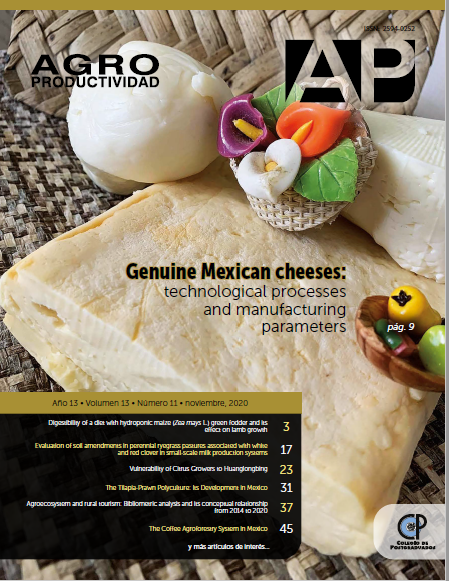The Mango Value Network (Mangifera indica L.) in Campeche, Mexico
##plugins.themes.bootstrap3.article.main##
Keywords
Resumen
Objective: Characterize the mango value network in the State of Campeche and identify its problems.
Design/methodology/approach: Based on documentary information and 40 semi-structured interviews, the structure of the value network, its key actors, and technologies were identified.
Results: Researchers advise to establish high-density orchards (3 333 plants ha-1), although growers accept to increment from 69 to only 278 plants ha-1. New production technologies are required for important cultivars, such as Tommy Atkins, Manila, and creole. Their vegetative growth responds differently to local humidity, rain, and soil conditions, due to their monoembryonic or polyembryonic origin.
Limitations of the study/implications: Producers in the social sector do not keep accounting and production records. An estimate of mango yields, investment, income, and profits was obtained based on the opinion of producers from the social and business sector of Campeche.
Findings/conclusions: Social sector producers of mango are willing to grow their orchards with 278 plants ha-1; it is required to evaluate the production technologies of Tommy Atkins, Manila, and creole cultivars, and to estimate the production costs. Private sector growers are choosing to substitute mango for high-density Persian lemon; they also prioritize fruit fly management and commercialization of fruits.

